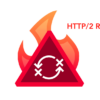Cisco’s Cloud Services Platform (CSP), a product that is part of the company’s virtual networking offering, is plagued by two serious vulnerabilities that can be exploited by remote attackers to execute arbitrary code and commands.
The company informed customers on Wednesday that the web-based user interface of the Cisco CSP 2100 product is affected by a critical vulnerability caused by insufficient sanitization of user input (CVE-2016-6373).
The flaw allows an authenticated attacker to remotely execute arbitrary commands on the underlying operating system with root privileges.
The second vulnerability affecting CSP 2100, rated “high severity,” allows an unauthenticated attacker to remotely execute arbitrary code on a targeted system by sending it a malicious dnslookup request (CVE-2016-6374). In this case, the code gets executed with the victim’s privileges.
Both security holes affect the Cisco Cloud Services Platform 2100 version 2.0 and they have been addressed in version 2.1.0 and later. The company says it’s not aware of any attacks leveraging these vulnerabilities.
Cisco is one of the several firewall vendors whose products have been targeted by the exploits leaked recently by a group calling itself Shadow Brokers. An analysis of the exploits, which were allegedly stolen from the NSA-linked Equation Group, revealed two zero-day vulnerabilities affecting the company’s ASA and IOS software.
The networking giant is aware of attacks against its customers via the IOS exploit and researchers discovered plenty of devices that can be targeted.
An Internet scan conducted this week by The Shadowserver Foundation revealed that there are over 840,000 Cisco devices that might be affected by the flaw. More than 255,000 of them are in the United States, but tens of thousands of devices have also been identified in Russia, UK, Canada, Germany, Japan, Mexico, France, Australia, China and Italy.
A scan carried out recently by Rapid7 in an effort to determine how many Cisco devices are still vulnerable to the ASA exploit showed that only roughly 38 percent of them had been patched.
Related: Cisco Patches Critical Flaws in Firepower Management Center














